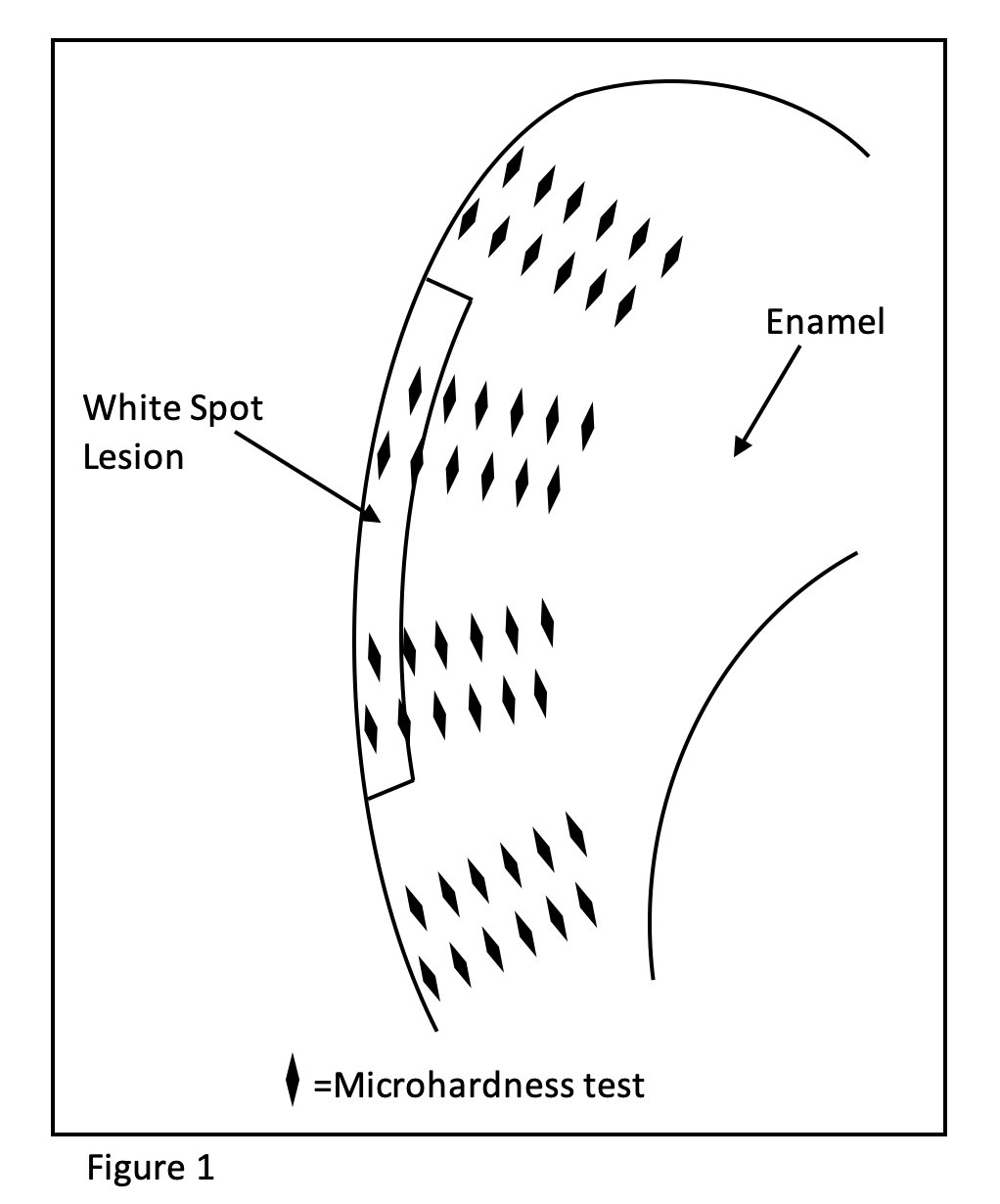IADR Abstract Archives
White Spot Lesion Remineralization with Bioactive Glass and CO2 Laser
Objectives: Poor oral hygiene during orthodontic treatment with brackets can lead to unsightly white spot lesions (WSL) due to enamel demineralization. This study compared the ability of bioactive glass (BAG) and casein phosphopeptide-amorphous calcium phosphate (CPP-ACP) with/without laser use, to decrease color difference and increase microhardness of WSLs.
Methods: Twenty-five (n=5/treatment group) extracted human molars were painted with varnish leaving a 3mmx3mm box exposed on lingual and facial surfaces. The initial color L*a*b* values were measured using a BYK-Gardner spectrometer (Columbia, MD). Teeth were submerged in S. mutans/BHI (1% sucrose) media for four days, with media replaced after two days. L*a*b* values were measured after removal from culture and one WSL from each tooth was treated for nine consecutive days. L*a*b* values were measured every three days. Teeth were sectioned occlusal-cervically through the center of the WSL and embedded in epoxy. Sectioned samples were polished with an Eco-Met 250 Polisher Grinder (Buehler, Lake Bluff, IL) through P4000. Knoop microhardness testing was completed on a Wilson VH1202 Micro Hardness Tester with a 0.025N load and a 15 sec. dwell time (see Figure 1). For L*a*b values, a non-parametic Kruskal Wallis test was used for significance (α=0.05). For microhardness, ANOVA testing with post-hoc Tukey was used for significance (α=0.05).
Results: Only sampling depth had a significant effect on the percent change in hardness values (F = 87.009, p-value < 0.001). The three shallowest sampling sites are significantly softer than all other sampling locations. Deeper regions do not differ in hardness. The effect of treatment on hardness changes between control and treatment groups at lesion sites showed no significant difference by treatment group (F = 1.073, p-value = 0.391). No significant differences were noted in L*a*b values between treatment groups.
Conclusions: These results indicate none of the treatments tested were any more effective than the others at remineralizing surface lesions.
Methods: Twenty-five (n=5/treatment group) extracted human molars were painted with varnish leaving a 3mmx3mm box exposed on lingual and facial surfaces. The initial color L*a*b* values were measured using a BYK-Gardner spectrometer (Columbia, MD). Teeth were submerged in S. mutans/BHI (1% sucrose) media for four days, with media replaced after two days. L*a*b* values were measured after removal from culture and one WSL from each tooth was treated for nine consecutive days. L*a*b* values were measured every three days. Teeth were sectioned occlusal-cervically through the center of the WSL and embedded in epoxy. Sectioned samples were polished with an Eco-Met 250 Polisher Grinder (Buehler, Lake Bluff, IL) through P4000. Knoop microhardness testing was completed on a Wilson VH1202 Micro Hardness Tester with a 0.025N load and a 15 sec. dwell time (see Figure 1). For L*a*b values, a non-parametic Kruskal Wallis test was used for significance (α=0.05). For microhardness, ANOVA testing with post-hoc Tukey was used for significance (α=0.05).
Results: Only sampling depth had a significant effect on the percent change in hardness values (F = 87.009, p-value < 0.001). The three shallowest sampling sites are significantly softer than all other sampling locations. Deeper regions do not differ in hardness. The effect of treatment on hardness changes between control and treatment groups at lesion sites showed no significant difference by treatment group (F = 1.073, p-value = 0.391). No significant differences were noted in L*a*b values between treatment groups.
Conclusions: These results indicate none of the treatments tested were any more effective than the others at remineralizing surface lesions.

